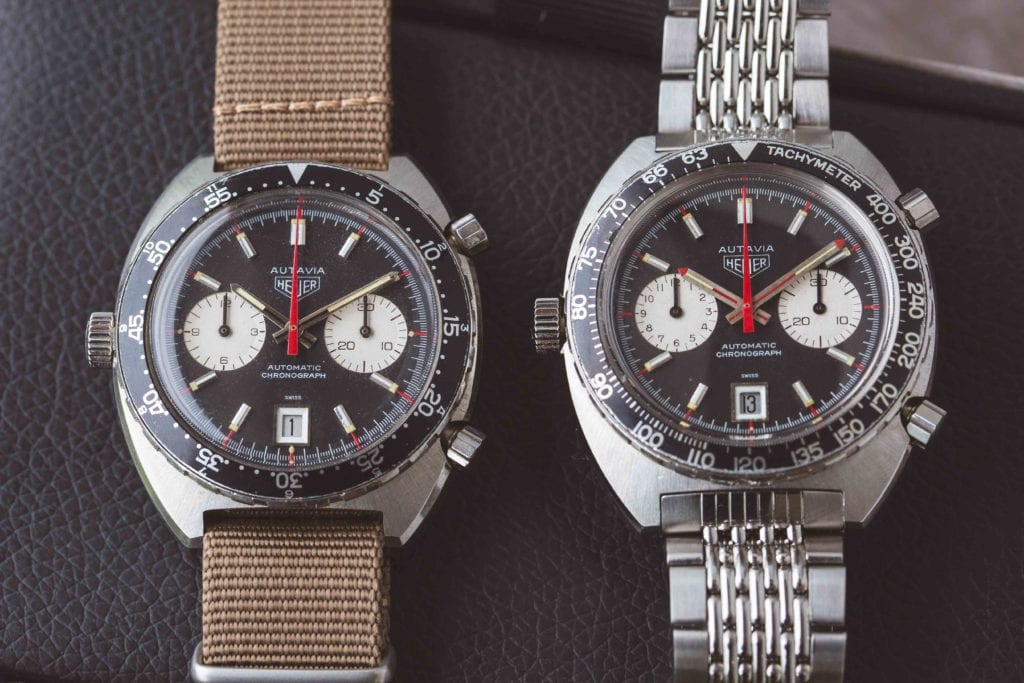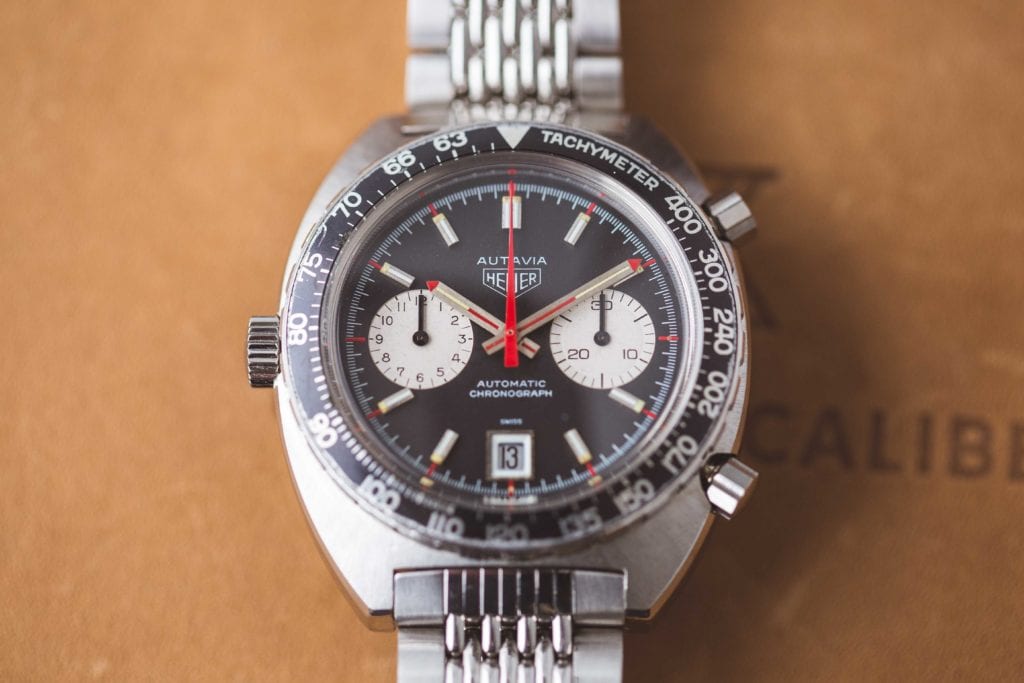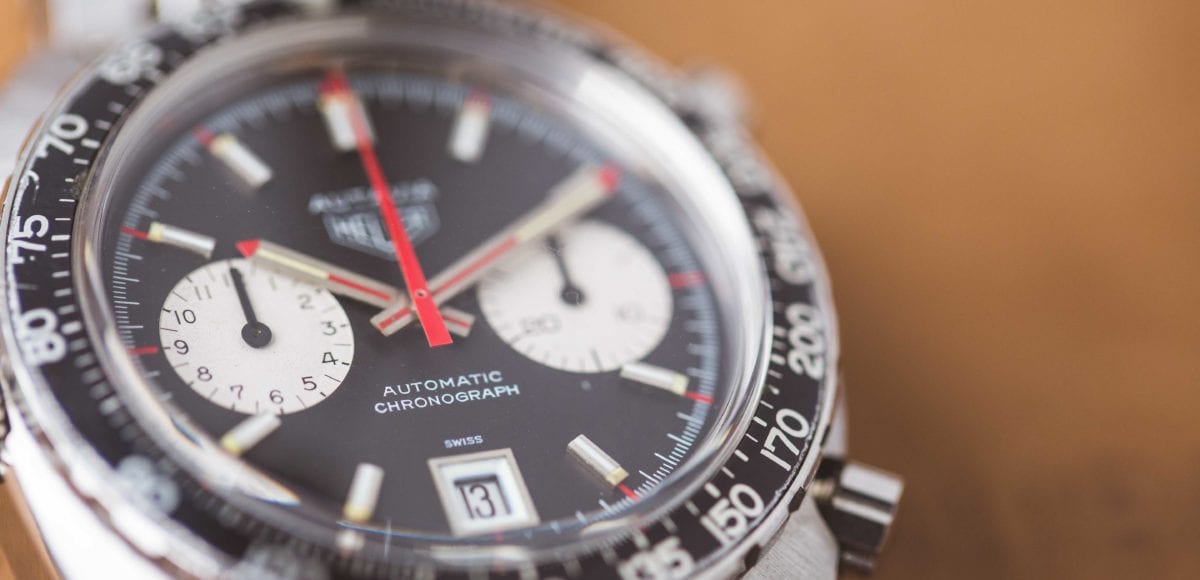The 1970s were the heyday of Indy Car racing, and racers of the time were the epitome of the modern masculinity. At the same time, the 1970s were a struggle for the Swiss watch industry, and 1971 in particular was a challenging year for Heuer, the brand that had made its name in racing chronographs.
The company, whose American sales made up the majority of their revenue, saw a surprising decline upwards of 19% of their market share. Looking for a new way to boost sales, the iconic Swiss company partnered with Brown & Williamson Tobacco Company, whose Viceroy cigarette brand was also experiencing some difficulties. The unexpected collaboration would prove to be a match made in heaven and a godsend for Heuer.
With an aggressive, male-focused campaign in mind, Heuer went back to the drawing board and created a top-quality chronograph which would be sold at the bargain price of $88.
This revolutionary watch? None other than the Viceroy special edition Autavia, a series of timepieces featuring brushed steel hands accented with red alongside a single “12” numeral. The bezel also saw some changes, with the standard black of previous Autavia models replaced by the same tachymeter bezel which had only been seen on white “Siffert” Autavias.

Left: A 2nd Execution Autavia, Right: A Viceroy Autavia
Aside from these small cosmetic differences, the Viceroy Autavias were basically the same as their higher-priced versions. The initial production run completed, the Viceroy promotion began on May 15, 1972 with gorgeous full-page ads in major publications of the time: Life, Time, Newsweek, U.S. News and World Report, and Sports Illustrated.

Full spread in the 1972 Indy 500 program, featuring the Number 9 car driven by Mario Andretti.
While the collaboration was a complete and utter failure for Viceroy, it was a smashing success for Heuer. So much so that Heuer eventually decided to stop selling the old Autavia in favor of the new — albeit at a slightly higher price than the bargain they were offering in partnership with Viceroy.
In fact, the company continued producing the Viceroy Autavia for over a decade, modifying the case size of the original reference 1163 to a slightly larger version for the 11630, before making its final move to the reference 11063 case in 1984. To put things in perspective, the Viceroy Autavia’s 12-year-plus run was the longest continual production in Heuer’s history — undoubtedly leading Heuer out of its early 1970 slump and into the enviable position it was in when TAG decided to buy it in the mid-80s.

40 years later, Viceroy Autavias are noteworthy not only for their remarkable design and construction but also for their distinctive place in watch history.
Images ©: Header, 1,3; Crown & Caliber. 2; OnTheDash.
Get More Articles Like This in Your Inbox
We're constantly creating great content like this. So, why not get it delivered directly to your inbox? By subscribing you agree to our Privacy Policy but you can unsubscribe at any time.






